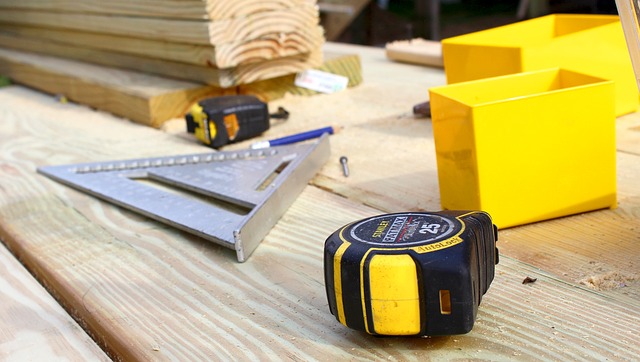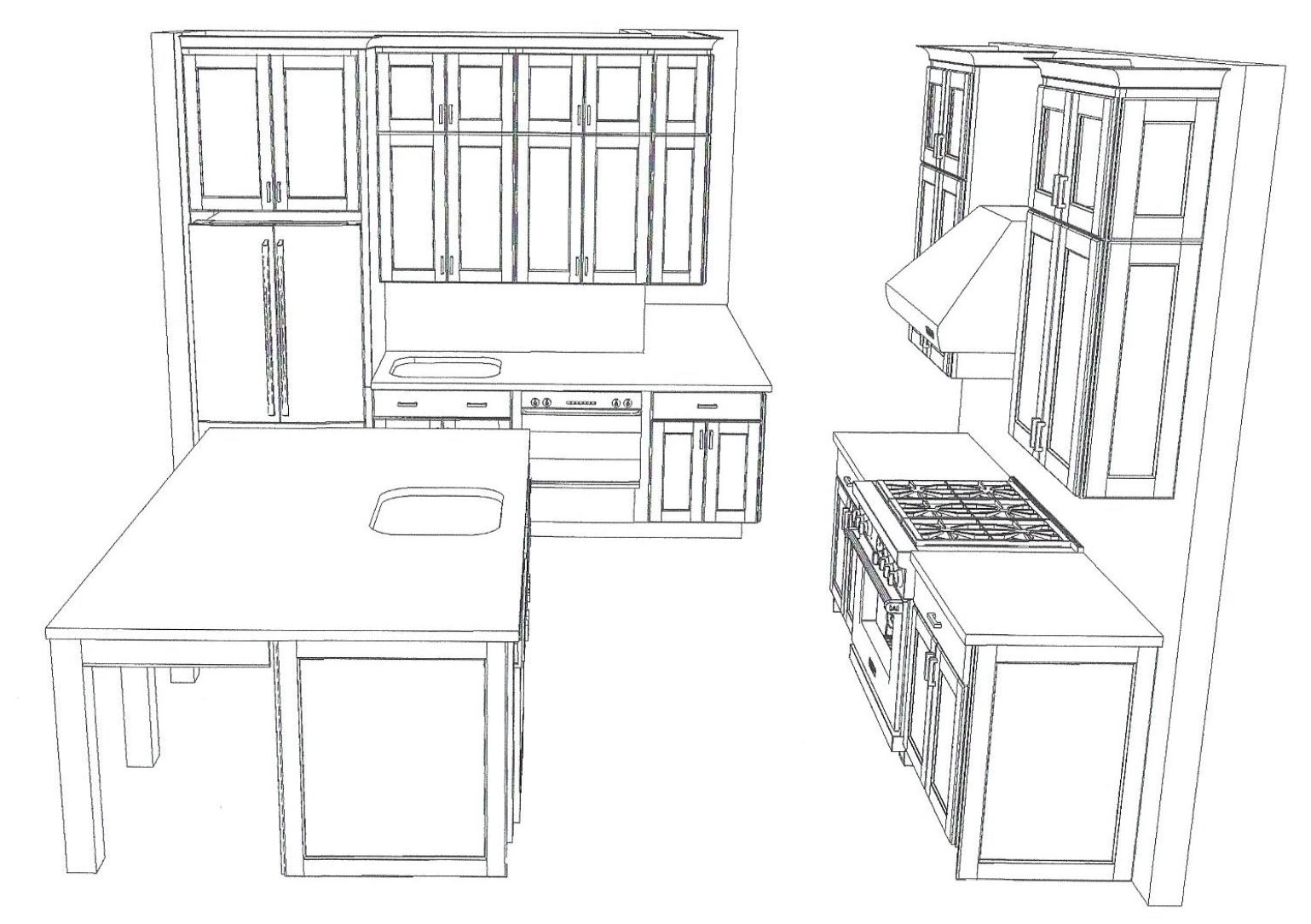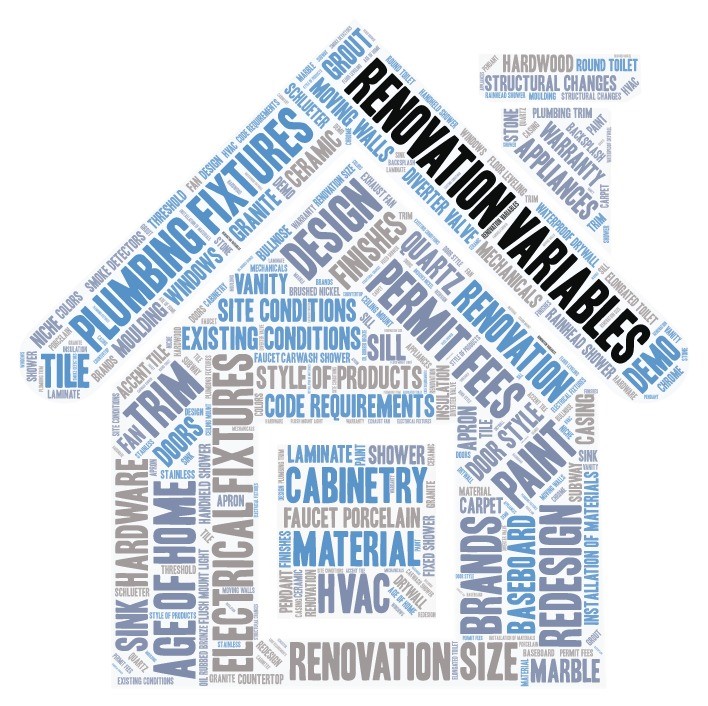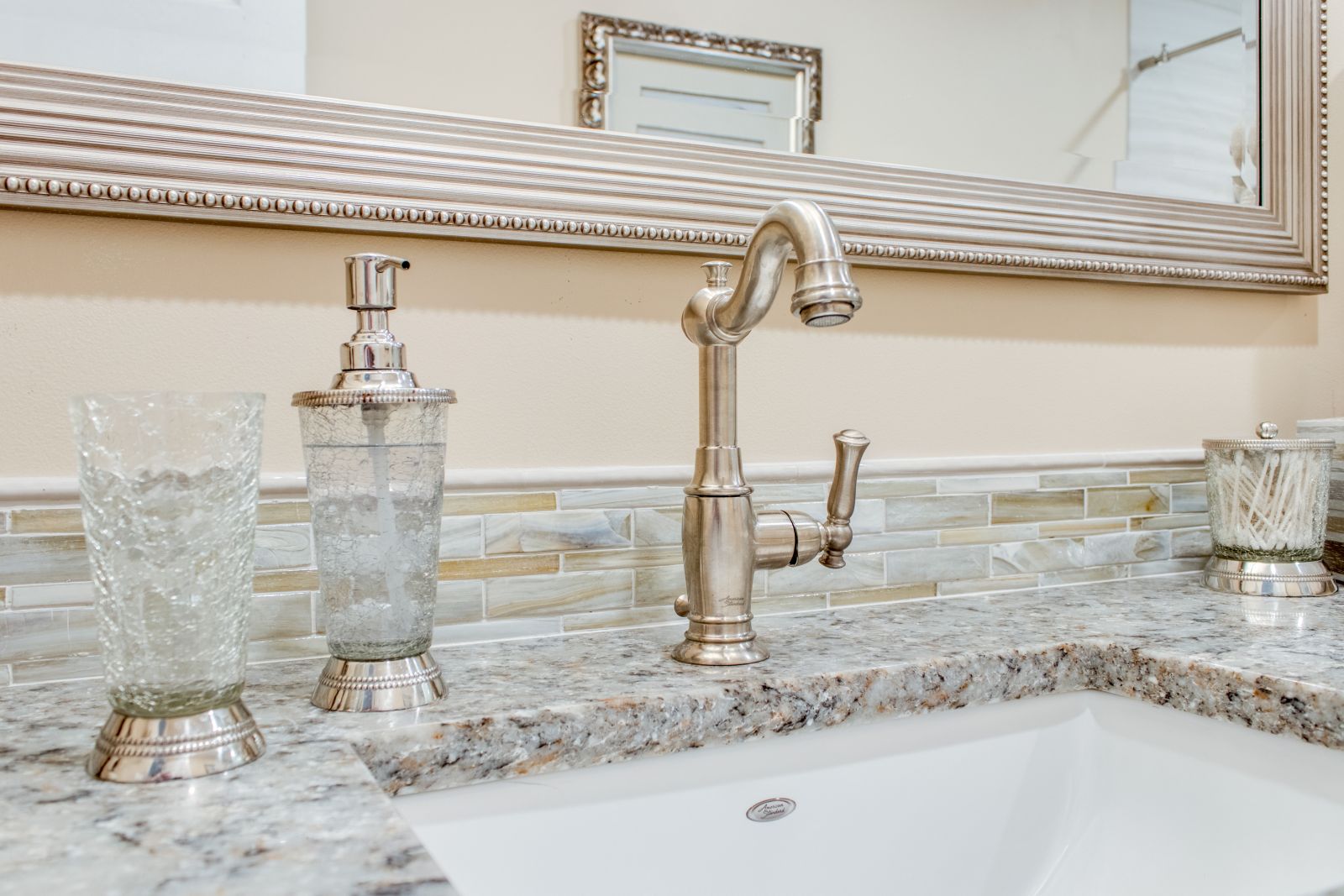As the chill of winter gradually fades, the days stretch longer and warmer signals of spring beckon us to embrace a fresh start. It’s the perfect time to shake off the cold season’s impact and revitalize our living spaces, both inside and out. This isn’t just about engaging in the annual spring cleaning frenzy; it’s about a thorough inspection and enhancement of our homes to ensure they are functioning at their peak, especially in preparation for the upcoming wet spring days and increasingly warmer weather. After all, winter can take a toll on our dwellings in more ways than one.
Below is a complete and comprehensive checklist for spring home maintenance that will guide you through essential tasks to refresh, repair, and ready your home for a new season of comfort and efficiency.
Gutters and Downspouts
- Remove Debris: Begin by clearing out leaves, twigs, and any other debris that have accumulated in your gutters over the winter. This debris can clog your gutters and downspouts, preventing proper drainage and potentially leading to water damage to your home’s exterior and foundation.
- Check for Blockages: After removing the larger debris, flush the gutters and downspouts with a garden hose to ensure there are no remaining blockages. Pay special attention to the elbows and bends in the downspouts where clogs frequently occur.
- Inspect for Damage: Examine your gutters and downspouts for any signs of damage such as holes, cracks, or rust. Also, check for sagging or sections that may have pulled away from the house. These issues can hinder effective water drainage and need to be addressed promptly.
- Secure Loose Sections: Tighten any loose gutter hangers and downspout brackets to secure the system. Make sure that all sections are firmly attached to your home and aligned properly to ensure efficient water flow.
- Seal Leaks: Use a gutter sealant to repair any small holes or cracks in your gutters. For larger gaps or splits, consider replacing the affected sections to maintain the integrity of your gutter system.
- Check Alignment: Ensure that your gutters are sloped correctly towards the downspouts for optimal water flow. Improper alignment can cause water to pool in the gutters, leading to overflow and potential water damage.
- Install Gutter Guards: Consider installing gutter guards to help keep debris out of your gutter system. Gutter guards can significantly reduce the amount of maintenance your gutters require and prevent clogs from forming in the future.
- Inspect Surrounding Area: Trim any branches that hang over your roof and could contribute to gutter debris. Overhanging limbs can also pose a risk to your roof and gutters during storms, so keeping them trimmed back is beneficial for the longevity of your gutter system.
- Ensure Proper Drainage: Make sure the area around your downspout discharge is graded away from your home. This helps prevent water from pooling around your foundation, which can cause leaks and structural damage over time.
Windows, Doors, and Thresholds
- Inspect for Damage: Begin by closely examining the windows, doors, and thresholds for any signs of wear or damage. Look for cracks in the frames or glass, warping of materials, and deterioration of seals. Winter weather can be particularly harsh on these areas, causing materials to contract and expand, which can lead to visible damage.
- Seal Gaps and Cracks: Use a high-quality caulk to fill any gaps or cracks you find around window and door frames. This not only prevents water from entering and causing further damage but also enhances energy efficiency by reducing drafts. Pay special attention to the thresholds, as these are critical barriers against water intrusion.
- Check Weatherstripping: Replace worn or damaged weatherstripping around doors and windows. Effective weatherstripping seals the moving parts of a window or door and is essential for comfort and energy conservation, keeping out wind and rain and maintaining indoor temperatures.
- Lubricate Moving Parts: Apply a silicone-based lubricant to any squeaky hinges or sticky tracks on sliding doors and windows. This maintenance ensures they continue to open and close smoothly, reducing stress on frames and mechanisms.
- Inspect and Adjust Hardware: Ensure that all locks, latches, and handles are functioning correctly. Tighten any loose screws and replace any hardware that is faulty or rusting. Properly working hardware is crucial for security and to maintain the seal against weather elements.
- Clean Window and Door Surfaces: Use a gentle, non-abrasive cleaner to wipe down doors, windows, and thresholds. Remove any dirt, debris, or salt residue that could cause materials to degrade over time. This is also an excellent time to clean any glass surfaces to boost clarity and appearance.
- Check for Proper Operation: Open and close each window and door to ensure they operate smoothly without sticking or squeaking. Adjust as necessary to guarantee proper closure and locking, which is vital for security and efficiency.
Window and Door Screens
- Inspect Windows for Damage:
- Glass: Check for any cracks or breakage in the window glass. Small cracks can often worsen over time, leading to bigger problems.
- Frames: Look for signs of wear on the window frames, such as peeling paint, wood rot, or warping. Metal frames should be checked for rust and corrosion.
- Seals and Caulking: Ensure that the seals and caulking around the windows are intact. Any gaps or cracks can lead to air leaks and reduced energy efficiency. Reseal any problem areas with a high-quality caulk.
- Clean Windows Thoroughly:
- Glass Cleaning: Use a mixture of vinegar and water or a professional window cleaning solution to clean the glass. This will remove any winter grime and enhance visibility.
- Frame and Sill Cleaning: Wipe down the window frames and sills with a damp cloth. If mold or mildew is present, use a mild bleach solution to clean it off.
- Track and Mechanism Cleaning: Clean the tracks of sliding windows using a brush and soapy water to ensure smooth operation. Lubricate the tracks and mechanisms if necessary.
- Inspect and Repair Screens:
- Check for Tears: Carefully inspect the screens for any holes or tears. Even small holes can let in bugs, so patch them or replace the screen fabric if necessary.
- Clean Screens: Remove the screens and gently wash them with soapy water using a soft brush. Rinse thoroughly and allow to dry before reinstalling.
- Frame Inspection: Examine the screen frames for any bends or breaks. Straighten out any bent frames and replace any that are broken.
- Functional Tests:
- Operation Check: Open and close each window to ensure they operate smoothly. If any windows stick or are difficult to open, clean and lubricate the moving parts.
- Locks and Latches: Test all locks and latches for functionality. Properly working locks are important for security and also help seal the windows against weather and leaks.
- Weatherproofing:
- Install Weatherstripping: If the old weatherstripping is worn out or missing, replace it to help insulate your home and prevent drafts.
- Energy Efficiency Check: Consider using thermal curtains or installing window films to improve energy efficiency. These can help regulate indoor temperatures and reduce heating and cooling costs.
Air Conditioner Unit
- Visual Inspection:
- Unit Exterior: Check the outside unit (condenser) for any visible signs of damage such as dents, rust, or debris buildup. Remove any leaves, twigs, or other materials that could obstruct airflow around the condenser.
- Insulation on Refrigerant Lines: Inspect the insulation around the refrigerant lines for deterioration or gaps. Replace or repair the insulation if necessary to ensure efficient operation.
- Cleaning the Unit:
- Condenser Coils: Clean the coils of the outdoor unit. Dirt and debris on the coils can hinder their ability to dissipate heat, reducing the efficiency of the system. Use a garden hose to gently wash away debris, taking care not to bend the delicate fins.
- Evaporator Coils: If accessible, check the evaporator coils, which can collect dust and dirt. Cleaning these coils can improve your system’s efficiency and air quality.
- Clear Drain Lines: Ensure that the AC’s drain line is clear of obstructions. A clogged drain can cause water to back up and damage the system or lead to moisture issues in your home. You can flush the line with a mild bleach solution to keep it clear.
- Change or Clean Filters:
- Air Filters: Replace or clean the air filters in your unit. Dirty filters restrict airflow, reduce efficiency, and can recirculate dust and allergens into your home. Most filters should be checked monthly and changed at least every three months.
- Check System Performance:
- Thermostat Settings: Test the accuracy of the thermostat with an external temperature gauge. Consider upgrading to a smart thermostat if you haven’t already, as it can improve energy efficiency and allow for better control of your indoor climate.
- Cooling Performance: After cleaning and servicing, turn on the unit to check if it’s cooling effectively. Listen for any unusual noises and note any unusual odors. If the air isn’t cooling adequately or if the unit cycles on and off too frequently, there may be a deeper issue.
- Professional Maintenance:
- Annual Service: Even with diligent homeowner maintenance, it’s advisable to have a professional HVAC technician perform an annual service check. They can handle tasks that require more expertise, such as checking coolant levels, testing for leaks, inspecting electrical components, and ensuring that the system is operating at peak efficiency.
- System Calibration: A professional can calibrate the system to ensure optimal performance, which can extend the life of your unit and help avoid costly repairs.
Foundation
- Visual Inspection:
- Cracks and Fractures: Walk around the entire perimeter of your home and look for visible cracks or fractures in the foundation. Note the size and location of each crack. Small hairline cracks can be normal due to settling, but larger gaps can indicate more serious issues.
- Water Damage: Look for signs of water seepage or staining on the foundation. Persistent moisture can weaken the foundation and lead to more significant problems over time.
- Check Grading and Drainage:
- Soil Grading: Ensure that the ground around your home slopes away from the foundation. Proper grading prevents water from pooling around the base of your home, which can cause hydrostatic pressure and lead to foundation damage.
- Gutters and Downspouts: Check that gutters and downspouts are directing water at least 5 to 10 feet away from your foundation. Use extensions if necessary to divert water to a safe distance.
- Inspect for Vegetation Issues:
- Root Intrusions: Keep an eye on any large trees near your home. Roots can grow toward the foundation and exert pressure or penetrate cracks. Consider root barriers if trees are close to your home.
- Shrubs and Plants: Ensure that plants near your foundation are not trapping moisture against the structure. It’s advisable to keep plants at least a few feet away from the base to allow the soil to dry properly.
- Monitor Indoor Symptoms:
- Doors and Windows: Check if doors and windows throughout the house are opening and closing properly. Sticking or misaligned doors and windows can be signs of foundation shifting.
- Floor and Wall Gaps: Look for gaps between walls and floors or ceilings. These can indicate that part of the structure is moving differently from the rest, a potential sign of foundation issues.
- Uneven Floors: Use a level to check for uneven floors across your home, particularly in older homes or those on sloping lots, as this can be a symptom of foundational shifting or settling.
- Moisture Control:
- Dehumidifiers: In areas with high humidity inside the house, such as basements, use dehumidifiers to control moisture levels. Excessive indoor humidity can contribute to condensation and moisture problems around the foundation.
- Ventilation: Ensure that your basement or crawl space is well ventilated. Proper ventilation helps reduce moisture accumulation, which can compromise foundation materials.
- Professional Evaluation:
- Hire a Structural Engineer: If you notice significant or multiple small cracks, or other worrying signs like major shifts in the structure, it may be wise to hire a structural engineer to assess the foundation. They can provide a detailed analysis and recommend necessary repairs or preventive measures.
- Regular Inspections: Consider having your foundation professionally inspected every few years, especially if you live in an area prone to ground movement or if your home is older.
Roof
- Visual Inspection:
- General Condition: Start with a visual inspection from the ground using binoculars to check for any obvious signs of damage such as missing, cracked, or curled shingles. If safe and feasible, use a ladder to get a closer look or consider hiring a professional.
- Flashing and Vents: Check the flashing around chimneys, vents, and skylights as well as along the ridges and valleys for signs of rusting, cracks, or breaks. Improperly sealed or damaged flashing can lead to leaks.
- Moss and Algae: Look for any green or black streaks which indicates moss, algae, or fungus growth. These can damage roof materials over time, so it’s important to address them promptly.
- Debris Removal:
- Clear Debris: Remove any debris such as branches, leaves, and other materials that have accumulated on the roof. Debris can retain moisture and lead to rot, as well as potentially block water flow and cause pooling.
- Clean Gutters and Downspouts: Ensure that your gutters and downspouts are clear of leaves and debris to prevent water backup which can damage the roof structure and the interior of your home.
- Damage and Repair:
- Shingle Repair: Replace any damaged or missing shingles. Shingles are the first line of defense against the elements and it’s crucial to maintain their integrity.
- Sealant Checks: Inspect and reapply caulk or sealant where necessary, especially around any roof penetrations such as antennas, satellite mounts, or plumbing vents, to prevent water ingress.
- Check for Soft Spots: While on the roof, carefully feel for any soft spots on the roofing surface which can indicate underlying damage to the roof deck or insulation.
- Professional Inspection:
- Annual Inspections: Even if no immediate issues are apparent, it’s wise to have a professional roofer conduct an annual inspection to catch potential problems that are not easily visible to the untrained eye.
- Professional Cleaning: Consider having your roof professionally cleaned if significant moss, algae, or debris is present, as professionals have the tools and techniques to clean without damaging roofing materials.
- Preventative Measures:
- Trim Overhanging Branches: Keep tree branches trimmed back from the roof to reduce the accumulation of leaves and debris and minimize the risk of damage during storms.
- Proper Insulation and Ventilation: Ensure your attic is properly insulated and ventilated. Good airflow can prevent heat and moisture buildup that can weaken your roof structure and cause ice dams in colder climates.
- Long-Term Care:
- Monitor After Severe Weather: After severe weather events, perform an additional check of the roof to ensure no new damage has occurred. This includes looking for signs of impact from hail or debris.
- Plan for Replacement: Understand the lifespan of your roofing materials and plan for replacement accordingly. Different materials have varying lifespans, and proactive replacement can prevent more extensive damage to your home.
Decks and Porches
- Visual Inspection:
- Structural Integrity: Start by inspecting the overall structure for stability. Check support posts, joists, railings, and stairs for signs of weakness or movement. Ensure that all components are securely attached and not wobbling or loose.
- Surface Condition: Examine the deck or porch surface for any signs of wear such as splintering, warping, or rotting wood. Look for cracked or loose boards that may need to be replaced or resecured.
- Railings and Stairs: Ensure that railings and stairs are sturdy and meet local safety codes. This includes checking that railings are at the proper height and balusters are spaced correctly to prevent accidents.
- Cleaning and Maintenance:
- Deep Clean: Sweep the deck to remove debris and then use a deck cleaner to deep clean the surface. This removes dirt, stains, and mildew that can damage the wood over time. For composite decks, follow manufacturer recommendations for cleaning products and methods.
- Stain and Seal: After a thorough cleaning, apply a water-repellent sealant or a stain-sealant combo to protect the wood from moisture and UV damage. This not only extends the life of your deck but also enhances its appearance. Reapply sealant as recommended or every 2-3 years.
- Sand Rough Areas: If there are splintered or rough patches, sand these areas smooth before applying any protective coatings to prevent injuries and improve aesthetics.
- Repairs and Replacements:
- Replace Damaged Boards: Replace any damaged or rotten boards to maintain safety and the structural integrity of the deck or porch.
- Tighten or Replace Hardware: Check all screws, nails, and other fasteners. Tighten any that have come loose and replace those that are rusted or damaged.
- Fix or Replace Broken Railings: Repair or replace any damaged railings or balusters to ensure they can provide proper support and safety.
- Enhancements and Upgrades:
- Upgrade Materials: Consider upgrading to higher-quality, more durable materials if frequent maintenance is a burden. Composite materials offer longevity and require less upkeep than traditional wood.
- Additions: Think about adding built-in seating, planters, or a new railing design to enhance the functionality and appeal of your deck or porch.
- Lighting: Install outdoor lighting to improve safety and ambiance. This can include stair lights, post lights, or overhead fixtures.
Outdoor Water
- Inspect Outdoor Faucets (Spigots):
- Check for Leaks: Turn on each faucet to check for leaks around the spout and handle. Even a small drip can lead to significant water waste and potential damage over time.
- Evaluate Water Flow: Ensure that water flow is strong and consistent. Weak water pressure can indicate a blockage or damage in the lines.
- Winter Damage: Look for any signs of frost damage which can occur if water was left in the pipes over winter and froze, potentially causing cracks.
- Test and Maintain Hoses:
- Inspect Hoses: Examine all garden hoses for brittleness, cracks, or kinks. Replace hoses that are damaged to prevent leaks and ensure efficient water use.
- Connections: Check the hose connections to ensure they fit tightly on the faucet and on any attachments like nozzles or sprinklers. Replace any worn washers or fittings that cause leaks.
- Storage: Properly coil and store hoses to prevent damage and prolong their life. Consider a hose reel for easy storage.
- Irrigation System Check-Up:
- Activate System Gradually: When first turning on your irrigation system, do so gradually to avoid a sudden rush of water that can create pressure spikes and potentially damage the system.
- Inspect Each Zone Individually: Run each zone of the irrigation system one at a time. Check for proper coverage and adjust sprinkler heads as necessary to ensure that water is not being wasted on non-lawn areas like sidewalks or driveways.
- Look for Damaged Sprinkler Heads: Replace any broken or worn sprinkler heads. Clean out any that are clogged with dirt or debris.
- Check for Leaks and Puddles: Look for signs of leaks such as unusually soggy areas or erosion, which could indicate a leak in the underground piping.
- General Maintenance and Upgrades:
- Backflow Prevention: Check any backflow prevention devices for proper operation. These devices prevent irrigation water from contaminating the potable water supply.
- Upgrade Timers and Controllers: Consider upgrading to a smart irrigation controller that adjusts watering based on weather conditions and soil moisture, significantly reducing water waste and improving plant health.
Outdoor Equipment
- Lawn Mower Maintenance:
- Change the Oil: Start by changing the oil to ensure your lawn mower runs smoothly. Check the manufacturer’s guide for the recommended oil type and replacement frequency.
- Replace or Clean Air Filter: A clean air filter is critical for the engine’s efficiency and longevity. Replace or clean the air filter according to the manufacturer’s recommendations.
- Sharpen Blades: Sharpen the mower blades to ensure clean cuts, which are better for the health of your lawn. Dull blades can damage grass, leading to poor growth and lawn health.
- Check Spark Plugs: Replace the spark plugs if they are worn out or dirty to ensure easy starting and efficient running.
- Clean the Undercarriage: Remove any grass clippings, mud, or debris from the undercarriage to prevent rust and maintain optimal performance.
- Gardening Tools:
- Clean and Sharpen: Clean all your gardening tools, such as shears, shovels, and rakes. Sharpen blades to make your gardening tasks easier and more efficient.
- Handle Maintenance: Check the handles for splinters or cracks. Repair or replace damaged handles to prevent injuries and improve grip and comfort.
- Rust Prevention: Apply a light coat of oil to metal parts to prevent rust, especially if the tools will be exposed to moisture.
- Power Tools and Machinery:
- Inspect Cords and Batteries: For electric tools, check all cords for fraying or damage and ensure batteries are charged and functioning properly.
- Fuel System Checks: For gas-powered tools, check the fuel system for leaks or cracks. Replace any damaged parts and make sure to use fresh fuel, as old fuel can cause problems.
- Operational Test: Run each piece of equipment to ensure it’s operating correctly. Listen for any unusual noises and check for smooth operation.
Yard Maintenance
- Lawn Care:
- Aerate the Soil: Begin with aerating your lawn to allow oxygen, water, and nutrients to penetrate the roots. This helps improve drainage and encourages robust growth.
- Fertilize: Apply a spring fertilizer tailored to your grass type to promote healthy growth. Consider using a slow-release formula that nourishes the lawn over time.
- Weed Control: Apply pre-emergent weed control to prevent weeds from taking hold. Address any existing weeds with spot treatments or manual removal.
- Mowing: Start regular mowing as soon as your grass begins to grow. Set your mower to the high end of the recommended cutting range to encourage root development and discourage weeds.
- Garden Beds:
- Clear Debris: Remove leaves, twigs, and other debris that have accumulated over the winter. This not only tidies up your beds but also prevents the growth of mold and mildew.
- Edge Garden Beds: Use an edging tool around garden beds to create clean lines and prevent grass from invading planting areas.
- Mulching: Apply a fresh layer of mulch around trees, shrubs, and beds. Mulch conserves moisture, suppresses weeds, and enhances soil quality.
- Pruning: Prune dead or overgrown branches on shrubs and trees to encourage healthy growth. Ensure that you prune at the right time for each plant species to avoid cutting off future blooms.
- Planting: Spring is a great time to plant new flowers, shrubs, and trees. Choose species that will thrive in your climate and soil type.
- Pest and Disease Inspection:
- Inspect Plants: Regularly check plants for signs of pests or disease. Early detection and treatment can prevent widespread damage.
- Natural Treatments: Use natural or recommended pesticides to treat infestations or diseases, being mindful to protect beneficial insects like bees and butterflies.
- Hardscape Maintenance:
- Pathways and Patios: Check for cracks or uneven surfaces in pathways, patios, and driveways. Repair any damage to prevent hazards and improve appearance.
- Furniture and Decor: Clean outdoor furniture and inspect it for damage. Repair or refresh as needed with paint or sealant.
- Fence Care: Inspect fences for stability and damage. Repair loose or damaged boards, and consider staining or sealing wood fences for longer life and better appearance.
Fireplace
- Inspect and Clean the Firebox:
- Ash Removal: Begin by removing ashes and debris from the firebox. Use a metal scoop and place ashes in a metal container to cool down safely before disposal.
- Check for Damage: Inspect the firebox for any signs of damage such as cracks or deterioration in the bricks or mortar. Minor cracks can often be repaired with refractory caulk.
- Chimney Inspection and Cleaning:
- Creosote Buildup: Creosote is a highly flammable by-product of wood burning and can accumulate in the chimney. It needs to be removed to prevent chimney fires.
- Blockages: Check for any blockages such as bird nests, branches, or leaves that can obstruct the chimney and pose a fire hazard.
- Structural Integrity: Examine the chimney for structural issues like leaning, cracks in the masonry, or deterioration of the mortar joints.
- Check and Maintain the Damper:
- Operation Check: Ensure that the damper opens and closes properly. The damper must seal well when closed to prevent drafts and energy loss.
- Rust and Corrosion: Clean any rust or corrosion on the damper and apply a high-temperature lubricant if necessary to maintain smooth operation.
- Exterior Chimney Maintenance:
- Cap and Crown: Ensure that the chimney cap is secure and in good condition to keep out rain and pests. Check the chimney crown (the top layer of mortar around the chimney) for cracks or wear.
- Flashing: Verify that the flashing (the seal between the chimney and the roof) is watertight. Any gaps or damage can lead to water leaks into your home.
- Interior Hearth and Surround:
- Hearth Cleaning: Clean the hearth area thoroughly to remove any ash or soot stains. Use a cleaner designed for the specific hearth material, whether brick, stone, or another surface.
- Decorative Elements: Inspect and clean any decorative elements such as mantels and surrounds. These areas can collect dust and soot which can detract from the appearance of your fireplace.
- Safety Equipment Check:
- Smoke and Carbon Monoxide Detectors: Ensure that smoke and carbon monoxide detectors near the fireplace are functioning correctly. Replace batteries as necessary.
- Prepare for Non-Use Periods:
- Air Out: Allow the fireplace to air out for a few days after cleaning to ensure all odors are gone.
- Deodorize: If lingering smells are a problem, consider placing a deodorizer or a bowl of baking soda in the firebox during the months it’s not in use.
Tile
- Inspection of Tile and Grout:
- Check for Cracks: Inspect tiles for any cracks, chips, or loose pieces. Cracked tiles can compromise the integrity of your tiling and should be replaced to prevent further damage.
- Grout Condition: Examine the grout lines for signs of wear, such as cracking or crumbling. Grout acts as a sealant to prevent moisture from getting underneath the tiles, so it’s important to keep it in good condition.
- Deep Cleaning Tiles:
- Cleaning Solution: Use a pH-neutral cleaner specifically designed for tile to avoid damaging the surface. Avoid using harsh chemicals like bleach or ammonia on natural stone tiles as they can etch the surface.
- Scrubbing: For ceramic and porcelain tiles, scrub the surface with a soft brush or non-abrasive pad to remove dirt and grime build-up. For more delicate tiles, such as marble or limestone, use a softer cloth.
- Spot Cleaning: Address any stains by applying a paste of baking soda and water, letting it sit for a few minutes, then gently scrubbing away.
- Grout Cleaning and Sealing:
- Grout Cleaning: Clean grout lines with a grout cleaner or a homemade solution of baking soda and vinegar. Use a grout brush to scrub the grout thoroughly.
- Grout Sealing: After cleaning and allowing the grout to dry completely, apply a grout sealer. This will help protect the grout from moisture and staining. Depending on the traffic and usage, grout should be sealed annually or biannually.
- Repairing Tile and Grout:
- Regrouting: If the grout is too damaged to be cleaned, consider regrouting the area. Remove the old grout with a grout saw or rotary tool and apply new grout.
- Tile Replacement: Replace any broken or severely cracked tiles. Carefully remove the damaged tile, clean the area, apply new adhesive, set the new tile, and regrout around it.
- Maintaining Caulking:
- Check Caulking: Inspect caulking around the edges of the tile, especially in wet areas like bathrooms and kitchens. Old or moldy caulking should be removed and replaced to prevent water damage.
- Apply New Caulk: Use a caulk that’s suitable for wet areas and matches the color of your grout for a seamless look.
- Special Care for Natural Stone Tiles:
- Stone Specific Products: Use cleaning and sealing products designed specifically for the type of natural stone you have, as they can vary significantly in porosity and sensitivity.
- Regular Sealing: Natural stone tiles often require more frequent sealing than ceramic or porcelain tiles to maintain their appearance and resistance to staining.
- Enhancing Tile Appearance:
- Polishing: For some types of tile, like marble or granite, polishing can restore shine and remove minor imperfections. Use a polish appropriate for the specific type of stone.
- Preventative Measures:
- Use Door Mats: Place mats at entrances to reduce the amount of dirt and debris that comes in contact with your tile floors.
- Protective Pads: Use felt pads under furniture legs to prevent scratches on tile surfaces.
Change your Batteries
- Identify Battery-Powered Devices:
- Safety Devices: These typically include smoke detectors, carbon monoxide detectors, and combination smoke and CO detectors. It’s crucial to ensure these devices are always in working order as they provide critical warnings that can save lives.
- Other Devices: Consider other items in your home that may require battery replacements, such as thermostats, security systems, emergency flashlights, and digital door locks.
- Smoke and Carbon Monoxide Detectors:
- Check Functionality: Press the test button on each detector to ensure it’s working correctly. The device should emit a loud siren if it’s operational.
- Replace Batteries: Even if the test is successful, replace the batteries at least once a year to ensure reliability. Some experts recommend changing the batteries during daylight saving time changes as an easy-to-remember routine.
- Check Expiry Date: Smoke and carbon monoxide detectors have a limited lifespan, which is typically 10 years from the manufacture date. Check the date on each device and replace the entire unit if it’s near or past this date.
- Thermostats and Security Systems:
- Battery Replacement: These devices often use batteries as a backup power source. Check the manufacturer’s instructions for battery type and replacement frequency. Replace as needed to ensure continuous operation, especially in case of a power outage.
- Function Check: After replacing the batteries, ensure the devices are functioning correctly by running a system check if available.
- Emergency Equipment:
- Flashlights and Radios: Ensure that all emergency equipment such as flashlights, radios, or other battery-powered safety gear is equipped with fresh batteries and functioning properly. This is particularly important to prepare for seasonal storm outages.
- Battery Checks: Regularly check these items throughout the year, especially before expected bad weather seasons.
Paint
- Assessing the Need:
- Visual Inspection: Conduct a thorough walkthrough of your home, both inside and out, to identify areas that need painting. Look for fading, peeling, or chipping paint that indicates it’s time for a refresh.
- Consider Trends: While functionality and protection are primary, consider also current color trends or personal preference changes that might inspire a repaint.
- Preparation for Painting:
- Surface Preparation: Proper preparation is key to a successful paint job. For exterior surfaces, this might involve power washing to remove dirt, mold, and loose paint. Interior surfaces require cleaning, sanding, and possibly priming, especially if you are making a significant color change or painting over a high-gloss finish.
- Repairs: Address any cracks, holes, or imperfections with filler or caulk, and sand smooth before painting. This ensures a professional-quality finish.
- Tape and Cover: Use painter’s tape to protect trim, windows, and other areas not being painted. Drop cloths or plastic sheeting should be used to protect floors and furniture from drips.
- Choosing Paint and Tools:
- Right Paint for the Job: Select the appropriate type of paint for your project. Exterior paints need to withstand the elements, while interior paints should be chosen based on room type (e.g., moisture-resistant paints for bathrooms and kitchens).
- Color Selection: Test paint colors by purchasing samples and painting small sections on different walls to see how they look under various lighting conditions throughout the day.
- Tools and Equipment: Gather all necessary tools such as brushes, rollers, paint trays, and extension poles. High-quality brushes and rollers can provide a better finish and make the job easier.
- Painting Techniques:
- Edge First: Start with “cutting in,” which involves painting the corners and edges with a brush. This allows for more precise control around areas where walls meet trim or other surfaces.
- Roller Application: Use a roller for larger wall sections, applying paint in a “W” or “N” pattern for even distribution. Be sure to overlap edges to avoid lines.
- Multiple Coats: Depending on the color and quality of paint, you may need multiple coats to achieve an even, opaque coverage. Allow proper drying time between coats as recommended by the paint manufacturer.
- Cleanup and Maintenance:
- Immediate Cleanup: Clean brushes, rollers, and other tools with water or solvent (depending on paint type) immediately after use. This extends the life of your tools.
- Proper Ventilation: Ensure rooms are well-ventilated during and after painting to help fumes dissipate and paint dry and cure properly.
- Touch-Ups: Store a small amount of leftover paint for future touch-ups. Keep it in a tightly sealed container and label it with the date and where it was used.
- Safety Considerations:
- Lead Paint: In older homes, be aware of the potential presence of lead paint. If you suspect lead paint, consult a professional before sanding or removal.
- Ladder Safety: When painting high areas, use ladders safely. Ensure stability and never overreach. Always keep three points of contact on the ladder.
As you work your way through this comprehensive spring maintenance checklist, remember that taking proactive steps now can prevent costly repairs and enhance your home’s functionality and curb appeal. With each task you complete, you’re not only preserving your home’s value but also creating a safer, more enjoyable environment for you and your family.
Don’t hesitate to tackle these tasks over several weekends or even consider scheduling professional help for the more complex projects like roof inspection or chimney cleaning. A well-maintained home is a happy home, and spring is the ideal time to rejuvenate your space.
If you have any questions about the checklist or need further advice on specific maintenance tasks, please reach out to us. We’re here to help you ensure your home is in top shape for spring and beyond. Remember, a little effort now makes for a much smoother transition into the rest of the year.
Ready to get started but not sure where to begin? Contact our team today for personalized guidance and expert tips on home maintenance. Let’s make this spring your home’s best yet!
























